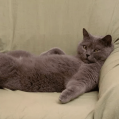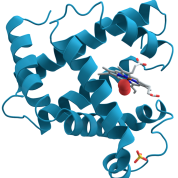-
Trending Products
-
Trending Topics
-

- 437 replies
- 19,799 views
-

- 60 replies
- 1,621 views
-

- 9,337 replies
- 759,806 views
-

- 53 replies
- 3,176 views
-

- 143 replies
- 9,243 views
-

Does your pre-op diet weight loss "count"?
By NickelChip, in General Weight Loss Surgery Discussions
- 24 replies
- 832 views
-

- 23 replies
- 1,102 views
-

What you should know about WLS they don't tell you
By BlondePatriotInCDA, in General Weight Loss Surgery Discussions
- 35 replies
- 2,647 views
-

- 41 replies
- 2,688 views
-
-
Recent Status Updates
-
Well recovering from gallbladder removal was a lot like recovering from the modified duodenal switch surgery, twice in 4 months yay 🥳😭. I'm having to battle cravings for everything i shouldn't have, on top of trying to figure out what happens after i eat something. Sigh, let me fast forward a couple of months when everyday isn't a constant battle and i can function like a normal person again! 😞· 0 replies
- This update has no replies.
-
Iʻm roughly 6 weeks post-op this morning and have begun to feel like a normal human, with a normal human body again. I started introducing solid foods and pill forms of medications/supplements a couple of weeks ago and it's really amazing to eat meals with my family again, despite the fact that my portions are so much smaller than theirs.· 0 replies
I live on the island of Oʻahu and spend a lot of time in the water- for exercise, for play, and for spiritual & mental health. The day I had my month out appointment with my surgeon, I packed all my gear in my truck, anticipating his permission to get back in the ocean. The minute I walked out of that hospital I drove straight to the shore and got in that water. Hallelujah! My appointment was at 10 am. I didn't get home until after 5 pm.
I'm down 31 pounds since the day of surgery and 47 since my pre-op diet began, with that typical week long stall occurring at three weeks. I'm really starting to see some changes lately- some of my clothing is too big, some fits again. The most drastic changes I notice however are in my face. I've also noticed my endurance and flexibility increasing. I was really starting to be held up physically, and I'm so grateful that I'm seeing that turn around in such short order.
My general disposition lately is hopeful and motivated. The only thing that bugs me on a daily basis still is the way those supplements make my house smell. So stink! But I just bought a smell proof bag online that other people use to put their pot in. My house doesn't stink anymore.
- This update has no replies.
-
Oh yeah, something I wanted to rant about, a billing dispute that cropped up 3 months ago.· 0 replies
Surgery was in August of 2023. A bill shows up for over $7,000 in January. WTF? I asks myself. I know that I jumped through all of the insurance hoops and verified this and triple checked that, as did the surgeon's office. All was set, and I paid all of the known costs before surgery.
A looong story short, is that an assistant surgeon that was in the process of accepting money from my insurance company touched me while I was under anesthesia. That is what the bill was for. But hey, guess what? Some federal legislation was enacted last year to help patients out when they cannot consent to being touched by someone out of their insurance network. These types of bills fall under something called, "surprise billing," and you don't have to put up with it.
https://www.cms.gov/nosurprises
I had to make a lot of phone calls to both the surgeon's office and the insurance company and explain my rights and what the maximum out of pocket costs were that I could be liable for. Also had to remind them that it isn't my place to be taking care of all of this and that I was going to escalate things if they could not play nice with one another.
Quick ending is that I don't have to pay that $7,000+. Advocate, advocate, advocate for yourself no matter how long it takes and learn more about this law if you are ever hit with a surprise bill.
- This update has no replies.
-
Some days I feel like an infiltrator... I'm participating in society as a "thin" person. They have no idea that I haven't always been one of them! 🤣· 0 replies
- This update has no replies.
-




















